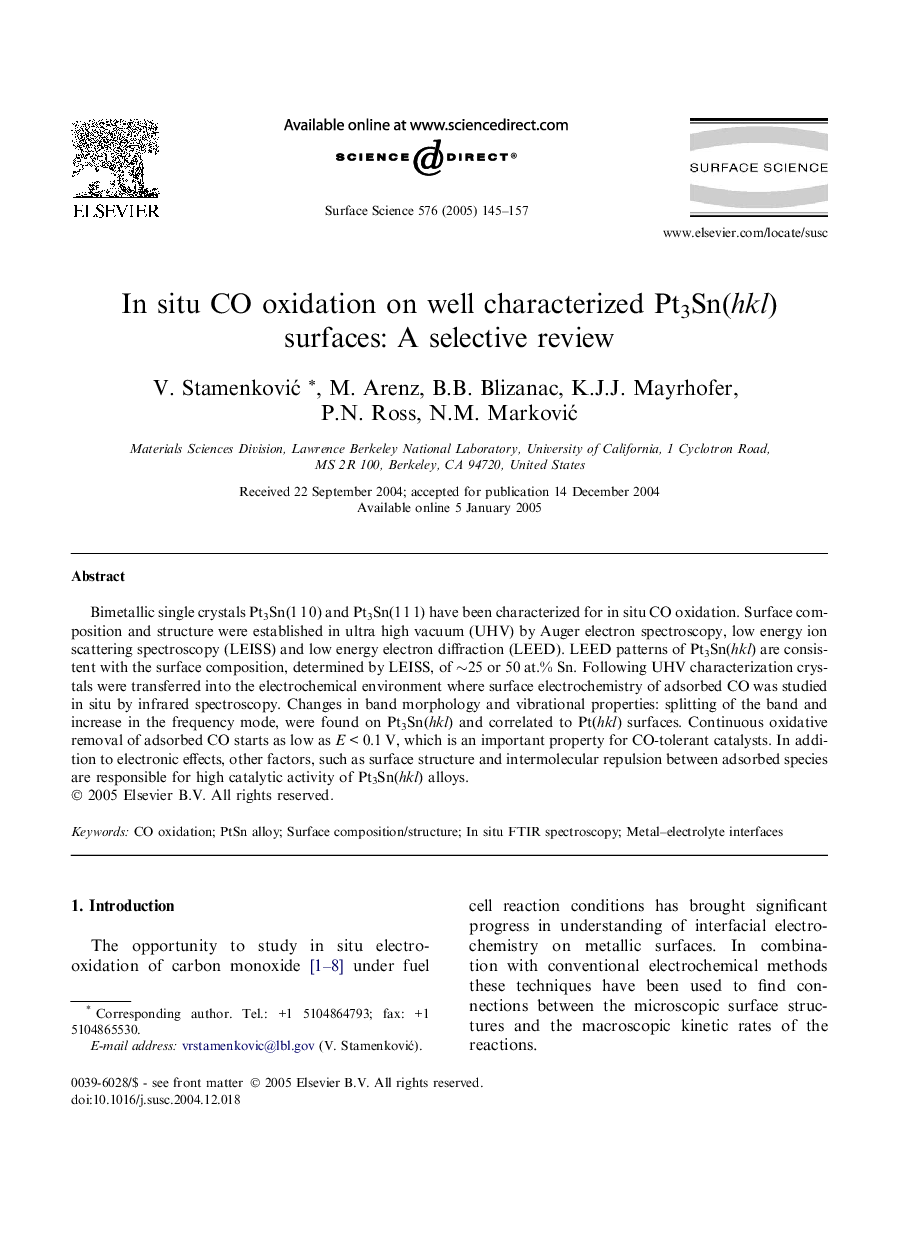| Article ID | Journal | Published Year | Pages | File Type |
|---|---|---|---|---|
| 9595134 | Surface Science | 2005 | 13 Pages |
Abstract
Bimetallic single crystals Pt3Sn(1Â 1Â 0) and Pt3Sn(1Â 1Â 1) have been characterized for in situ CO oxidation. Surface composition and structure were established in ultra high vacuum (UHV) by Auger electron spectroscopy, low energy ion scattering spectroscopy (LEISS) and low energy electron diffraction (LEED). LEED patterns of Pt3Sn(hkl) are consistent with the surface composition, determined by LEISS, of â¼25 or 50Â at.% Sn. Following UHV characterization crystals were transferred into the electrochemical environment where surface electrochemistry of adsorbed CO was studied in situ by infrared spectroscopy. Changes in band morphology and vibrational properties: splitting of the band and increase in the frequency mode, were found on Pt3Sn(hkl) and correlated to Pt(hkl) surfaces. Continuous oxidative removal of adsorbed CO starts as low as EÂ <Â 0.1Â V, which is an important property for CO-tolerant catalysts. In addition to electronic effects, other factors, such as surface structure and intermolecular repulsion between adsorbed species are responsible for high catalytic activity of Pt3Sn(hkl) alloys.
Related Topics
Physical Sciences and Engineering
Chemistry
Physical and Theoretical Chemistry
Authors
V. StamenkoviÄ, M. Arenz, B.B. Blizanac, K.J.J. Mayrhofer, P.N. Ross, N.M. MarkoviÄ,
